What Is The IBS Diet?
The IBS diet is a short-term elimination diet that helps manage IBS symptoms. It is not a singular diet plan. It instead consists of various diet strategies to reduce symptoms and gradually reintroduce eliminated foods to identify the specific triggers that provoke those symptoms. Based on the observations made during this diet, a dietitian may customize the diet plans to suit an individual’s specific IBS conditions and requirements for long-term management. Irritable bowel syndrome is a functional intestinal disorder characterized by recurrent abdominal pain, flatulence, bloating, diarrhea, and constipation. However, fixing one’s diet and gut microbiome may help manage the symptoms. According to the International Foundation for Gastrointestinal Disorders, 5% to 10% of the global population has IBS. Approximately, 20% to 40% of annual gastroenterologisti A medical expert specializing in the diagnosis, treatment, and prevention of gastrointestinal diseases. visits are due to IBS. Further, there are 2.4 to 3.5 million annual physician visits for IBS in the US alone (1). Currently, 25 to 45 million people in the US are affected by this condition. Men account for 35% to 40% of the cases while women account for 60% to 65% of the cases. This disorder also impacts 6% to 14% of the global adolescent population and shows consistent symptoms (1). IBS symptoms require immediate medical intervention, and one of the first measures taken is dietary modification. IBS can have a severe impact on your day-to-day life. A 2018 online survey conducted on people with self-reported IBS found that 68.8% reported at least one bowel syndrome in the last 12 months. Further, the prevalence of IBS symptoms such as bloating, diarrhea, and flatulence were higher in women than in men.
Prevalence Of Self-Reported IBS Symptoms In The Adult Belgian Population
The next section will help you understand what foods you can include in your IBS diet.
Foods To Eat On The IBS Diet
While the food items may vary based on the IBS diet type, the following list includes foods that you may consume with IBS:
Fruits: Bananas, raspberries, blueberries, strawberries, kiwis, grapes, and oranges Vegetables: Cucumbers, lettuce, carrots, zucchini, pumpkin, eggplant, and bell peppers Proteins: Chicken, eggs, turkey, fish, tofu, red meat (in moderation, only if you can tolerate it) Gluten-Free Grains: Rice (white or brown), quinoa, and gluten-free certified oats Nuts And Seeds (In Moderation): Almonds, walnuts, pine nuts, macadamia nuts, and pecans Herbs And Spices: Ginger, basil, thyme, oregano, black pepper, cilantro, sage, and paprika Lactose-Free Dairy And Alternatives: Lactose-free milk, hard cheese, yogurt, and dairy alternatives like almond or coconut milk/yogurt Sweeteners: Stevia, glucose, dextrose, and agave Beverages: Herbal teas, juices from the fruits mentioned above (low-quantity), and lactose-free drinks
Now that you know what foods you can eat on this diet, it is equally important to learn about the foods you should avoid to further aggravate the symptoms.
Foods To Avoid On The IBS Diet
The following foods may trigger IBS symptoms and are thus eliminated from the IBS diet:
Fruits: Apples, pears, peaches, mangoes, cherries, watermelon, plums, and nectarines Vegetables: Cauliflower, mushroom, broccoli, Brussels sprouts, onions, garlic, artichoke, and asparagus (to be avoided in raw forms as well as they are difficult to digest) Processed Foods: All processed foods, including sausages, deli meats, hot dogs, etc., as they contain preservatives and additives Wheat Products: Pasta, cereals, and bread Legumes: Chickpeas, black beans, lentils, and kidney beans Dairy Products: Lactose-containing milk, yogurt, soft cheese, and cream High-Fat Foods: Deep-fried, greasy foods and fatty meat cuts (may worsen bloating) (2) Spicy Foods: Too much spice can irritate the digestive tract and trigger IBS symptoms(2) Drinks: Coffee, caffeinated drinks, sodas, carbonated drinks, and alcoholic beverages Sweeteners: High-fructose ingredients, sorbitol, xylitol, and mannitol High-Sugar Foods: Sugary desserts, snacks, and candies (may trigger IBS symptoms) (3)
It is important to note that overeating may also disturb digestive functions and exacerbate IBS symptoms. Eat smaller and frequent meals spread throughout the day for easier digestion. The actual diet recommended to an individual with IBS also depends on the severity of the symptoms and their food sensitivities. We shall now explore a few popularly adopted IBS diets that may also be tailored to an individual’s needs.
Common Types Of IBS-Friendly Diets
Your personalized IBS diet includes two widely accepted diet plans and suggestions from your healthcare expert. Let us take a look at what they are and how they may help with IBS.
Low-FODMAP Diet For IBS
The low-FODMAP diet is one of the most widely recognized diets that may significantly improve IBS symptoms (4). The acronym FODMAP stands for fermentable oligosaccharides, disaccharides, monosaccharides, and polyols. They are a group of hard-to-digest short-chain carbohydrates (sugars) that can ferment in the colon, pull excess water into the bowel, and trigger flatulencei The accumulation of gasses in the digestive system that results in belching and makes one pass wind through the anal passage. . This can result in abdominal pain, bloating, and diarrhea. It is an elimination diet that temporarily excludes all high-FODMAP foods for 2 to 6 weeks to reduce IBS symptoms. These foods, then, are gradually reintroduced into the diet to determine which ones actually cause symptoms. The following are the high-FODMAP foods to avoid on the IBS diet:
Fruits: Pears, peaches, apples, mangoes, nectarines, plums, and watermelon Vegetables: Onions, broccoli, Brussels sprouts, asparagus, and artichoke Legumes: Lentils, kidney beans, and chickpeas Wheat products: Pasta, bread, and cereals Artificial Sweeteners: Sorbitol, xylitol, mannitol, maltitol, and isomalt Lactose: All lactose products (if you have lactose intolerance)
The following are low-FODMAP foods that you may eat on the IBS diet:
Fruits: Strawberries, blueberries, grapes, and oranges Vegetables: Green beans, pumpkin, zucchini, eggplant, carrots Lean Proteins: Skinless chicken, turkey breasts, eggs, cod, and halibut Grains: Rice and quinoa Lactose-Free Products: Lactose-free milk or alternatives like coconut, almond, or rice milk (if you have lactose intolerancei A condition where the body cannot digest dairy sugars (lactose) due to the lack of the digestive enzyme lactase. )
The low-FODMAP diet is perhaps the most commonly known diet plan for IBS. However, gluten is another ingredient that must be avoided due to its close association with the condition. Scroll down to the next section to learn more about the gluten-free diet for IBS and how it works.
Gluten-Free Diet For IBS
Gluten, a protein found in wheat and certain grains, is a potential irritant and is associated with multiple gastrointestinal disorders including IBS, celiac diseasei A genetic autoimmune disease where gluten consumption causes inflammation in the lining of the small intestine. , Crohn’s diseasei A type of chronic inflammatory bowel disease characterized by the swelling of the digestive tract that causes diarrhea and abdominal pain. , ulcerative colitisi A type of chronic inflammatory bowel disease that causes inflammation in the colon and rectum and increases the risk of colon cancer. , and so on (5). It is hard to digest and can also generate peptidesi Small amino acids that regulate various digestive functions such as food intake and gastric emptying. that negatively impact the digestive and the immune systems. A 2016 UK study conducted on people with IBS found that the majority of the subjects showed a marked improvement in abdominal swelling, depression, and anxiety with a gluten-free diet within 6 weeks (6). Therefore, eliminating gluten from your diet may play a significant role in managing IBS. The following are some gluten-containing foods to avoid:
Wheat Barley Rye Pasta Cereal Bread Crackers Gluten-containing sauces Malt vinegar Beer
You can incorporate gluten-free versions of pasta, bread, crackers, etc., if you do not wish to give up on your favorite foods. Alternatively, you can opt for the anti-inflammatory diet for IBS, which recommends soluble fiber-rich foods, such as oats and apples, probiotics, healthy fats, etc. We have seen how dropping FODMAPs and gluten from your diet can ease your IBS symptoms. A natural consequence of eliminating whole food groups from your regular diet is weight loss. In the next section, we discuss how one can manage their weight effectively while on the IBS diet. Take a look.
IBS Diet For Weight Loss: Healthy Dieting Tips
IBS diet strategies are not intended for weight loss, although one may naturally lose weight due to the dietary restrictions. That said, these strategies are not recommended for healthy individuals intending to lose weight. However, individuals with IBS who wish to lose weight may adhere to the following to lose weight: The above-mentioned steps make it possible for people with IBS to manage their weight healthily. As IBS dietary modifications are constantly monitored, lifestyle changes must be adjusted accordingly. If you have just started with your IBS diet, observe its impact for a few weeks before gauging what works for you. In the next section, we have included a 30-day diet plan you can follow. Take a look.
30-Day IBS Diet Plan
Long-term management of IBS requires keeping regular tabs on your diet. A closely monitored 30-Day IBS diet plan will give you a fair idea of what works for your body and what doesn’t. You may also enjoy mid-morning and evening snacks while on the IBS diet. Here are a few low-FODMAP snack options that will keep you full. 1 Caesar salad wrap with 85 grams of baked chicken breast, ½ cup of lettuce, 1 tablespoon of parmesan, and 2 tablespoons of low-FODMAP Caesar dressing 85-100 grams of pan-seared fish with ½ cup of spinach salad and 50 grams of basmati rice 1 slice of gluten-free bread with 2 tablespoons of peanut butter A 2 egg omelete loaded with potato, spinach, and tomatoes, and served with red pesto 2 slices of toasted gluten-free bread with scrambled eggs made from 2 eggs and tomatoes You may substitute salmon with 3 oz. of grilled chicken 1 bowl of low-fat supermarket potato salad served with tinned salmon or sardines
30-40 grams of walnuts ½ cup of lactose-free yogurt 2-3 rice cakes topped with diced or smashed avocados 40 grams of baked kale chips 30-40 grams of fruit and nut bars 1 bowl of mixed berries in lactose-free yogurt or cream 30-40 grams of 70% dark chocolate with ½ cup of berries 5-10 baby carrots with garlic-free hummus
Go through the foods list, research basic nutrition facts, and plan your diet with well-balanced meals. You may also start your day with a hot cup of herbal tea made of ginger, sage, chamomile, licorice, or peppermint. Also, drink plenty of water (at least 2 liters) throughout the day to ensure proper hydration. Now that we have a basic understanding of the IBS diet, let us explore some lip-smacking recipes you can try at home.
Recipes For IBS Diet
Constantly looking into ingredients to ensure a low-FODMAP-compliant meal can be a hassle. That is where the following recipes help. These are quick, delicious, and easy on your tummy.
1. Shrimp And Quinoa Salad
Ingredients
450 grams of shrimp, peeled and deveined 1 cup of quinoa 1 cup of mixed greens 1 cup of cherry tomatoes ½ cucumber, sliced Lemon vinaigrette dressing (made of 2 tablespoons of olive oil, juice of 1 lemon, and salt and pepper to taste)
Preparation Time: 25-30 minutes How To Prepare
2. Grilled Chicken With Steamed Vegetables
Ingredients
85-100 grams of skinless chicken breasts 1 cup of low-FODMAP mixed vegetables 1 tablespoon of olive oil Salt and pepper to taste Herbs for seasoning (optional)
Preparation Time: 20-25 minutes How To Prepare
3. Low-FODMAP Vegetable Omelet
Ingredients
2 large eggs ½ cup of spinach leaves ½ slice of bell pepper ⅓ cup of chopped chives 1 tablespoon of olive oil Salt and pepper to taste
Preparation Time: 10-15 minutes How To Prepare You can experiment with simple dishes like these for filling and nutritious meals. Ensure all ingredients are low-FODMAP and practice portion control. Are probiotics helpful for IBS? Yes, probiotics are safe for consumption for individuals with IBS as they may improve intestinal immunity and relieve symptoms like pain and bloating (9). Is fiber recommended for IBS? Yes. However, most physicians recommend gradually increasing fiber intake to bulk up the stool and make digestion easier (10). Can I still get enough nutrients on an IBS diet? Yes. It is possible to get adequate nutrition with the IBS diet. Consult your physician to understand your symptoms and come up with a diet plan that makes up for any nutrient deficit. How many times should you eat on the IBS diet? You can eat 5-6 small meals at regular intervals spread throughout the day for easier digestion. Can I eat a normal diet with IBS? Yes. It is possible to eat a normal diet with IBS. However, you must first adhere to an IBS diet to eliminate all potential triggers from your diet, identify specific food intolerances, and significantly reduce their consumption. Is fasting good for IBS? While anecdotal evidence suggests that IBS fasting therapy may improve gastrointestinal motilityi The contractions of the smooth muscles within the walls of the gastrointestinal tract that help move the food along the tract. and gut microbiotai A wide variety of microorganisms such as bacteria, fungi, and viruses occupying a particular environment. , it may not work the same way for everyone. More research is warranted to back up the efficacy of fasting for IBS.
Illustration: Irritable Bowel Syndrome (IBS) Diet: Foods To Eat And Avoid
Navigating your meals with IBS can be challenging. Check out this video where a professional nutritionist takes you through a simple low-FODMAP recipe that is delicious and easy on the stomach.
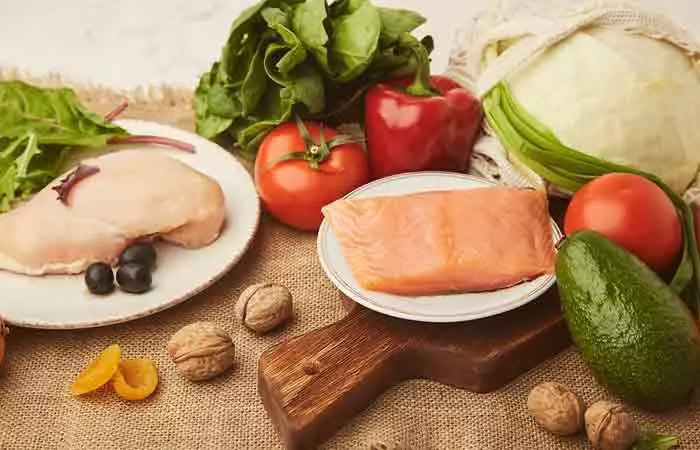


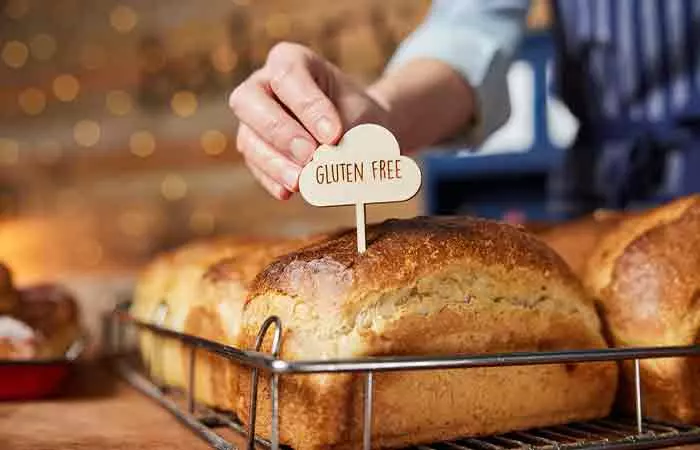
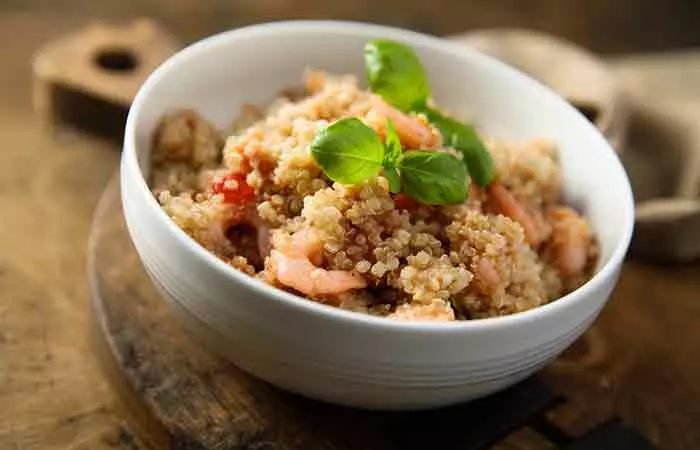
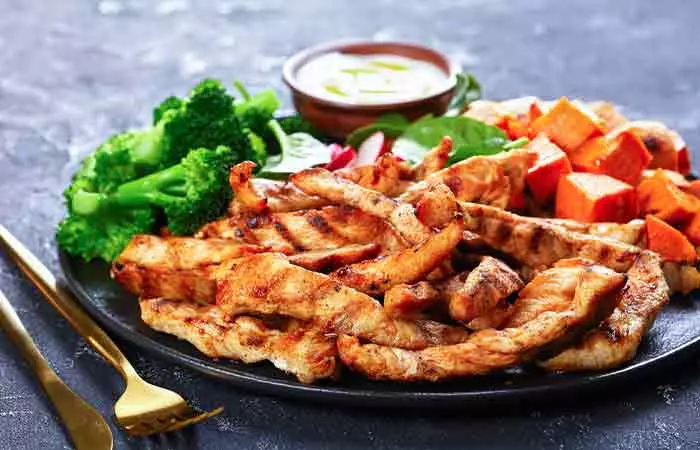
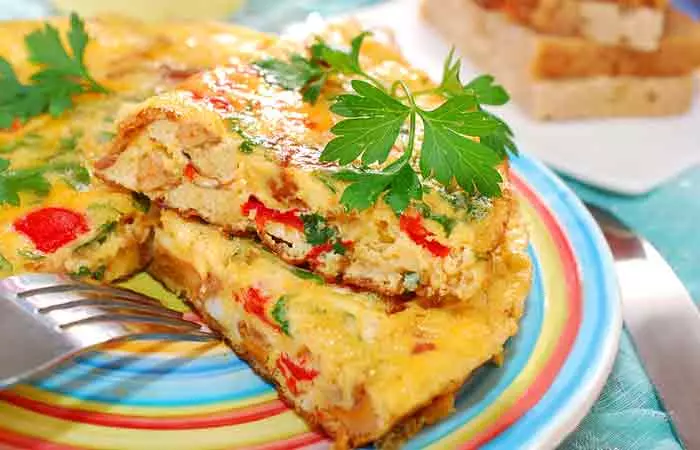

_diet_foods_to_eat_and_avoid_illustration.jpg.webp)





